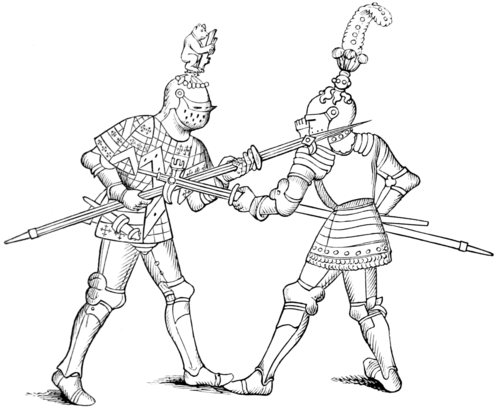late learned Dr. Milner, but a very erroneous notion of its real form is there conveyed, inasmuch as the plate exhibits the design of one moiety of the mitre, as if it were developed, or as a flat object, instead of shewing it in the true perspective. This defect has been properly corrected in Mr. Shaw's plate.
The student of military antiquities and costume will find in these volumes a profusion of well-chosen examples, some of which, like the splendidly emblazoned monumental effigy of William Longuespée, at Salisbury, are of the highest interest as specimens of ancient English art. This beautiful early work of sculpture is formed of the grey marble which formerly was quarried in great abundance at Corfe, and various places on the Dorsetshire coast. The figure is in great part highly polished, but was richly painted and gilded throughout, as a lively portraiture of the warrior in his complete equipment. Mr. Shaw has bestowed much care and pains in the endeavour to give, from indications which are still to be found on certain parts of the statue, a restoration of the original effect. It should be observed, that all monumental effigies, of what material soever, of stone or wood, of marble or alabaster, were, from the earliest periods down to the seventeenth century, invariably painted and gilded, in accordance with the proper colouring of the original costume. An interesting exhibition of the military accoutrement of a later period is afforded by the delineation which is copied from the Life of Richard Beauchamp, preserved in the British Museum. It represents a single combat with axes, which took place at Verona between

